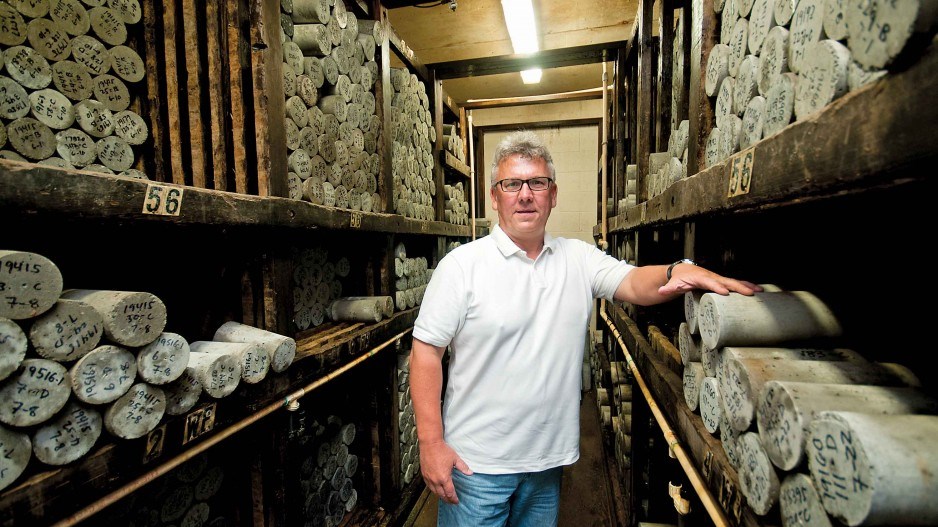After completing multibillion-dollar public works projects like the Port Mann Bridge, South Fraser Perimeter Road and Northwest Transmission Line, local engineering firms would normally have taken a breather.
But companies like McElhanney Consulting Services Ltd. and Canadian Construction Materials Engineering and Testing (CCMET) are as busy as ever, and getting busier, thanks in no small part to industrial growth in northern B.C., where the nascent liquefied natural gas (LNG) industry is the biggest driver.
“We’ve been growing 10% to 15% per year for the last four or five years,” said McElhanney CEO Allan Russell.
With a head count approaching 1,000 (about 600 in B.C.), McElhanney is a privately owned engineering firm that specializes in mapping and surveying, so it tends to be busy at the front end of projects.
With a workforce of 250, CCMET specializes in materials testing (concrete, asphalt and soils), so it tends to come in at the construction phase of large-scale projects. One of the larger residential construction projects it has worked on recently was Trump International Hotel & Tower Vancouver.
“We probably hold about 80% of the concrete testing [contracts] in the Lower Mainland,” said Mike Johnston, CCMET’s CEO.
“We’re primarily a consulting engineering company, much like some of the bigger players in the marketplace, but our business model is a little inverted from what they are,” Johnston said. “They’re typically engineering groups with materials testing. We’ve got that flipped – we’re primarily material testers.”
With large public works projects coming to an end, CCMET experienced a brief slowdown, but it is already hiring again and plans to ramp up to 300 employees this summer.
Companies like McElhanney expect another boom with other future public works projects like the George Massey Tunnel replacement project and the final phase of the Kicking Horse Canyon highway project.
“Those are all good-sized projects that will come out, but in the short term it’s really been the resource sector, specifically LNG, that has really picked up,” Russell said.
Large energy projects in northern B.C. have been driving growth for CCMET and McElhanney.
One of CCMET’s 14 business units is Northern Geo Testing and Engineering Ltd., which specializes in testing for the gas fields as well as for hydroelectric projects. The company recently approved a new $2.3 million lab in Fort St. John that is focused on the energy sectors, doing materials testing and pile-driving analysis.
The company also worked on several large run-of-river hydro projects and is hoping to win contracts on the biggest hydro project in recent history: the $8.8 billion Site C dam. But Russell said even a project like Site C is dwarfed by the opportunity that an LNG industry presents.
One of the areas the company specializes in is mapping and surveying. With so many pipelines and roads needed for the LNG sector, the company is already busy. And should a number of proposed LNG projects proceed, the company expects to get a whole lot busier.
Multiple LNG projects have been proposed, and each one could create millions of dollars of work for engineering companies and even more for construction companies.
Pacific NorthWest LNG’s plant and pipeline alone would provide about $16 billion worth of construction. Russell said about 8% of those LNG plant and pipeline construction budgets would be for engineering.
“That’s a big number,” he said.
To put it in context, $16 billion for an LNG plant and pipeline project is more than what was spent building the Channel Tunnel that connected the U.K. with France in 1994: $15.4 billion. It is three times the budget of the Panama Canal expansion.
When upstream assets are included, Petronas’ total investment in B.C. is $36 billion, which was the final price tag of the Three Gorges Dam in China.
CCMET and McElhanney are both B.C.-based, private, employee-owned companies.
“A lot of our competitors have been purchased by publicly traded companies in the last four, five, six years,” Russell said.
About 40% of CCMET’s employees are shareholders; McElhanney is owned by about a third of the company’s employees, so when those companies profit from large projects, all the profits stay in B.C.
One advantage of the employee-owner model is that it’s good for retaining talent, Johnston said.
“There are some employees who are currently with us that started 25 to 27 years ago. It’s not really to raise capital – it’s really just to bring people in that want to drive the company forward. There isn’t one person outside the company that owns shares. It’s all employee-owned.”
CCMET has 14 separate business units, two of which are in Alberta. McElhanney has offices throughout Western Canada. It also has offices in Florida and Indonesia.




